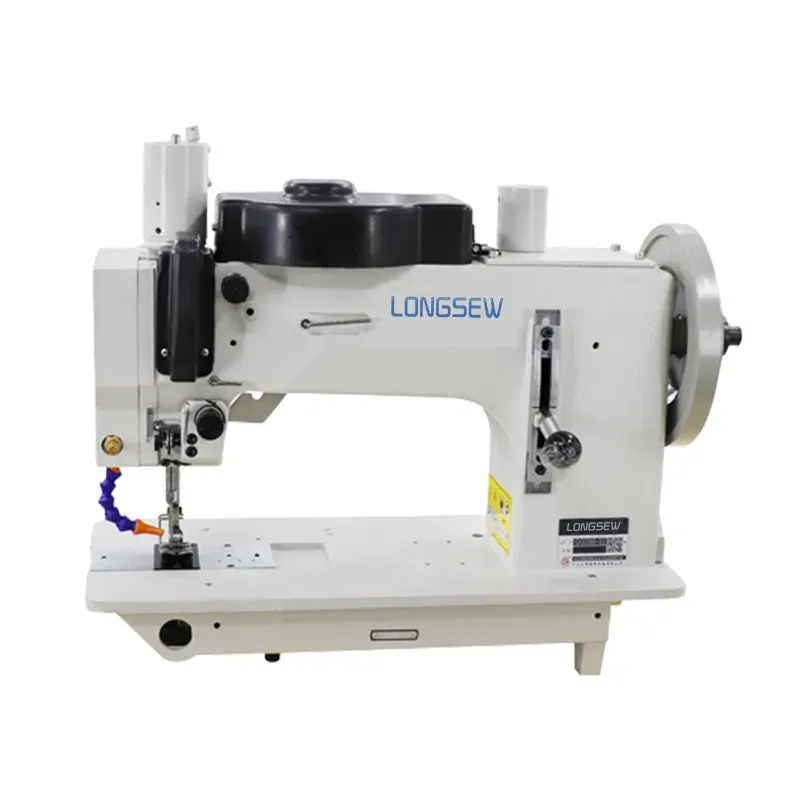Exploring the Innovations and Benefits of Automatic Machine Sewing Technology in Modern Manufacturing
The Evolution and Impact of Automatic Machine Sewing
In the realm of textile manufacturing and clothing production, automatic machine sewing stands as a cornerstone of efficiency and innovation. The journey of sewing machines began in the 19th century, but advancements in technology have transformed these mechanical devices into automated marvels that significantly enhance productivity, precision, and creativity in the fashion industry.
Automatic machine sewing refers to the use of advanced sewing machines that operate with minimal human intervention. These machines are equipped with sophisticated features such as programmable settings, multi-needle capabilities, and automatic threading systems. This automation allows for consistent and high-quality stitching, reducing the likelihood of human error and ensuring uniformity in mass production.
One of the most significant advantages of automatic machine sewing is its ability to boost production speed. Traditional sewing methods often require skilled laborers to complete each step of the sewing process, which can be time-consuming and labor-intensive. In contrast, automatic sewing machines can perform numerous tasks in a fraction of the time. For example, automated machines can sew hems, attach buttons, and finish seams all in one pass, drastically reducing the time required to produce garments. This efficiency not only meets the increasing demand for faster turnaround times in the fashion industry but also contributes to cost savings.
Moreover, automatic machine sewing allows for greater design complexity. With the incorporation of computerized technology, designers can create intricate patterns and unique styles that were previously challenging to achieve with manual sewing. These machines can execute elaborate designs with precision, allowing for a wide range of creative possibilities. As a result, fashion brands can experiment with diverse fabrics, textures, and designs, pushing the boundaries of traditional garment construction.
automatic machine sewing

The impact of automatic machine sewing extends beyond the production line; it also reshapes the workforce dynamics within the industry. While automation may lead to a reduction in the number of manual sewing jobs, it simultaneously creates new opportunities in machine operation, programming, and maintenance. Workers are required to adapt to these changes by acquiring new skills related to operating sophisticated machinery and understanding digital design software. As a consequence, the industry sees a shift toward a more technologically savvy workforce, fostering a culture of continuous learning and adaptation.
Environmental sustainability is another critical aspect where automatic machine sewing plays a significant role. Automated machines can optimize material usage, reducing fabric waste by ensuring precise cutting and sewing. Additionally, the efficiency of these machines means that less energy is consumed during the production process. This is particularly relevant as the fashion industry grapples with its environmental impact, and brands increasingly seek ways to adopt sustainable practices.
However, the transition to automatic machine sewing is not without its challenges. High initial investment costs can be a barrier for smaller manufacturers. Furthermore, there is a growing debate about the implications of automation on employment rates, particularly in regions where hand-sewing is a cultural staple and a source of livelihood.
In conclusion, automatic machine sewing represents a significant leap forward in the textile industry, marrying tradition with innovation. Its ability to enhance production speed, elevate design complexity, and promote sustainability signals a new era for garment manufacturing. As the industry continues to evolve, the focus must remain on balancing technological advancements with the human elements of creativity and craftsmanship, ensuring that the art of sewing thrives in harmony with automation. The future of sewing, much like fashion itself, is poised for exciting transformations, driven by the interplay of technology and design.
-
Leather Sewing Machine: The Industrial Standard for Tough MaterialsNewsJul.18,2025
-
Sail Making Machine: Heavy-Duty Stitching for Industrial and Marine NeedsNewsJul.18,2025
-
Sling Sewing Machine: The Backbone of Heavy-Duty FabricationNewsJul.18,2025
-
Leather Sewing Machine: Precision for Heavy-Duty StitchingNewsJul.18,2025
-
Big Bag Sewing Machine: Powering the Future of Bulk PackagingNewsJul.18,2025
-
FIBC Sewing Machine: Essential Equipment for Bulk Bag ProductionNewsJul.18,2025
-
Heavy Duty Leather Sewing Machine: A Must-Have for Professional LeatherworkNewsMay.28,2025





























